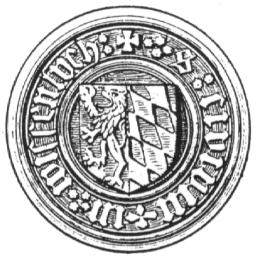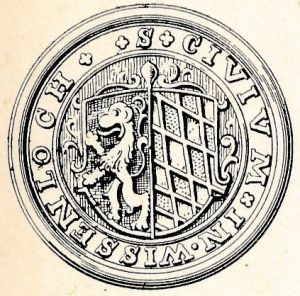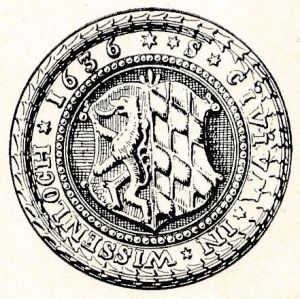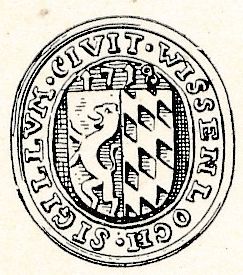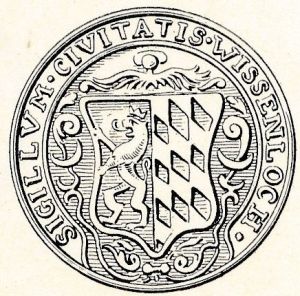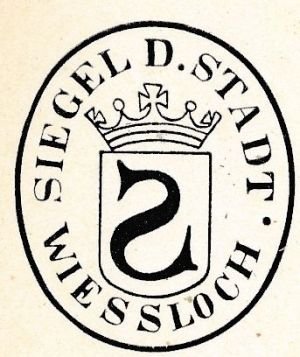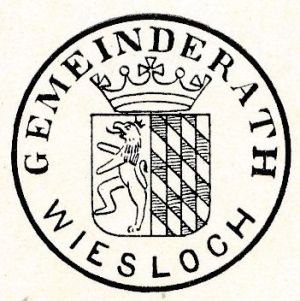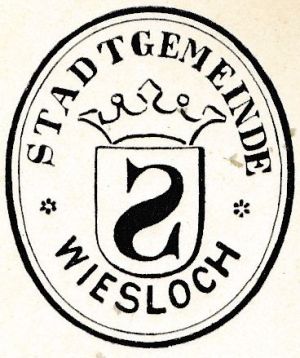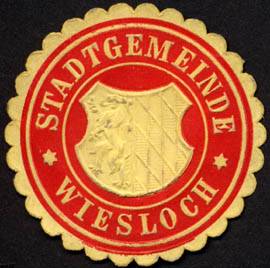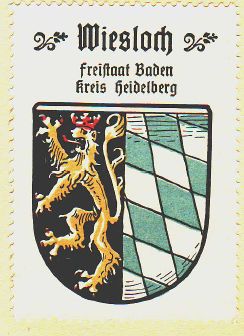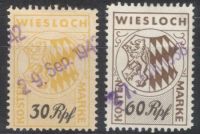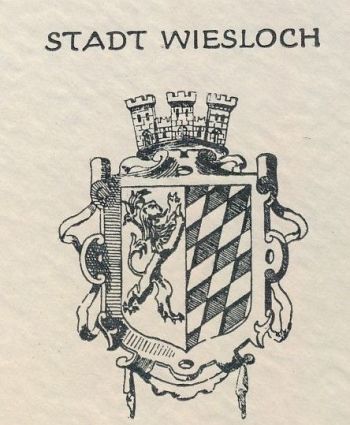Wiesloch: Difference between revisions
Knorrepoes (talk | contribs) m (Text replacement - "{{media}}" to " {{de1}} {{media1}}") |
Knorrepoes (talk | contribs) m (Text replacement - "{{de}}" to "") |
||
| Line 1: | Line 1: | ||
'''WIESLOCH''' | '''WIESLOCH''' | ||
Revision as of 05:51, 27 December 2022
WIESLOCH
State : Baden-Württemberg
District (Kreis) : Rhein-Neckar Kreis (until 1973 Heidelberg)
Additions : 1908 Altwiesloch, 1971 Baiertal, Schatthausen
| German | In gespaltenem Schild vorne in Schwarz ein rot bewehrter und rot bezungter goldener Löwe, hinten von Blau und Silber schräggerautet. |
| English | No blazon/translation known. Please click here to send your (heraldic !) blazon or translation |
Origin/meaning
Wiesloch already received town rights in 965 and city rights in the early 13th century. Around 1230 the city became a possession of the Wittelsbach family, as Princes of the Pfalz (Palatinate). For the next centuries different branches of this dynasty ruled the city.
The oldest seal dates from the early 14th century and shows only a shield with the lion of the Pfalz. In the 15th century the diamonds of the Wittelsbach family were added. These arms were identical to the present arms, which were officially granted in 1898.
From 1842-1866 the city used in its seals only a capital letter S, but not in its arms.
| The seal from 1330-1402 |
The seal from 1608-1630 |
| The seal from 1652-1669 |
The seal from 1718-1892 |
| The seal from 1725-1828 |
The seal from 1842-1866 |
| The seal from 1877-1878 |
The seal from 1887-1892 |
| The seal from 1892-1898 |
The seal from 1898 |
| The arms by Hupp in the Kaffee Hag albums +/- 1925 |
The arms on a local stamp |
| Municipal stationery, 1960s |
Literature: Stadler, 1964-1971, 8 volumes; John and Wüst, 1996.

